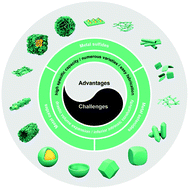Recent progress of nanostructured metal chalcogenides and their carbon-based hybrids for advanced potassium battery anodes
Abstract
The investigation on rechargeable potassium-ion batteries (PIBs) has been revitalized owing to the unique characteristics of abundant reserves and comparable energy density over lithium-ion batteries (LIBs), which hold huge potential for grid-scale electrical energy storage systems. Currently, the lack of appropriate anode materials has hindered the development of PIBs. Metal chalcogenides (MCs) including metal oxides, sulfides, selenides, and their carbon-based hybrids have aroused tremendous attention as anodes for PIBs in the scientific community due to the benefits of high theoretical capacity and various physicochemical properties. Herein, a comprehensive overview is provided on the recent achievements of MCs and their carbon-based hybrids, and the effects of nanostructured MCs on the future of PIBs technologies are discussed in detail by studying their inherent diverse attributes. Besides, several effective measures are emphasized to deal with imminent issues faced by MCs in PIBs, proposing valuable insights for the development of potassium-based rechargeable batteries.

- This article is part of the themed collection: 2021 Materials Chemistry Frontiers Review-type Articles


 Please wait while we load your content...
Please wait while we load your content...